Telehealth Treatment for Addiction in California
At Westlake Village Recovery, we offer telehealth treatment with licensed counselors, tailored to your recovery needs. Our virtual services are confidential, compassionate, and available at various levels of treatment.
Here are common types of telehealth care:
- Video and Phone Services: You can talk to your therapist or counselor over a private video or phone call. These sessions are real-time and personal.
- Email Support: Some programs allow individuals to check in or ask questions by email between sessions. This helps facilitate accountability and connection.
- Group Support/Therapy Meetings: Virtual group sessions create space to share with others in recovery. These groups can offer emotional support and shared experience.
- Specialty Apps: Many providers use apps for goal tracking, mindfulness, or reminders. These tools can help manage cravings and routines.
Telehealth for Addiction vs. In-Person Treatment
Here are some key differences between the two treatment options:
- Location: In-person treatment happens at a designated clinic. Telehealth treatment can happen wherever you have a secure internet connection.
- Flexibility: Telehealth offers more freedom with scheduling. In-person treatment may require more time and travel.
- Environment: In-person treatment removes home distractions. Telehealth treatment relies on you to create a quiet, private space.
- Technology: Telehealth treatment requires devices, apps, and the internet. In-person treatment does not.
- Support: Both treatment styles offer professional help, but in-person care may feel more authentic to some people.

In-person treatment provides direct, face-to-face contact with your care team. It can feel more personal and easier to connect emotionally. Receiving treatment in a designated treatment center can help you avoid distractions and stick to a routine.
Telehealth care is delivered through phone or video, allowing you to receive support from the comfort of home or any quiet space where you feel safe. It’s flexible, private, and works well for people who can’t travel or need flexibility.
Who Benefits From Telehealth?
- You live far away from treatment centers: Rural or remote areas often lack easy access to addiction services. Telehealth brings support to your home.
- You have limited mobility or health issues: Physical challenges, illness, or lack of transportation can make in-person visits hard. Telehealth removes that burden.
- You experience social anxiety or fear of judgment: Talking from a safe space can reduce stress and make it easier to open up.
- You have a mild or early-stage addiction: Some people don’t need 24/7 care but still want help staying on track.
- You have a busy schedule or personal obligations: Parents, caregivers, and working adults often struggle to find time for treatment. Virtual care is designed to help fit into your life.
- You want to maintain privacy: It’s normal to have concerns about being judged or labeled. Telehealth allows discreet, confidential support from home.
- You’re transitioning from inpatient care: Telehealth can help you stay connected to care after leaving a structured program. This helps prevent relapse.
Telehealth may not be the answer for everyone. But for many people, it’s a vital strategy that helps provide support when in-person care isn’t possible or practical. It allows treatment programs to meet people where they are and offer hope for recovery.
Potential Downsides of Telehealth
- Dependence on reliable technology: Reliable internet connection and a device like a phone, tablet, or computer. Without these, connecting with your care team becomes difficult.
- Necessity of basic tech skills: People who use telehealth services must be able to log in to programs, use apps, or handle video calls. This can be stressful for those who aren’t immediately comfortable with technology.
- Lower guarantee of privacy: Privacy is another concern with treatment options. Unlike a clinic, your home may have distractions or people nearby. To get the most out of each session, it’s important to find a calm, private spot where you feel free to speak openly.
- (Perceived) lack of connection: Some people feel that telehealth services lack the human warmth of face-to-face care. Not being in the same room as a care provider can feel distant or less personal for certain individuals.
Even with these downsides, many people find that the pros of telehealth outweigh the cons. This can be especially true when telehealth is combined with in-person care or other support.
How to Prepare for Telehealth Addiction Treatment
Here’s how to prepare for a telehealth treatment session:
- Find a Quiet Space: Pick a quiet space for your treatment where you’re unlikely to be disturbed. This helps you speak freely and focus.
- Check Your Tech: Make sure your device is charged and connected to the internet. Test your video and sound before the session so you can troubleshoot any problems early.
- Use Headphones: This can improve privacy and reduce background noise.
- Have materials nearby: Keep a notebook, pen, water, or anything you might need during the session on a desk (or table) within easy reach.
- Log in Early: Sign in a few minutes before your appointment to address any last-minute issues that may come up.
- Prepare Emotionally: If relevant to your treatment, take a few moments to reflect on what you’d like to share or work through during your session. Write down questions, feelings, or goals ahead of time.
Starting anything new can feel uncertain. But small steps of preparation can help you feel more in control and ready to heal.

Treatment Options for Addiction
Outpatient care allows you to live at home while attending scheduled treatment sessions during the week. This option works well for people with mild to moderate addiction who with daily responsibilities or life obligations. It provides flexibility while still offering therapy, education, and support.
Intensive Outpatient Programs (IOPs) give you more structure and guidance than regular outpatient care. You attend treatment several days a week for a few hours at a time. IOP is a good step-down from inpatient care or for people who need more structure than basic outpatient care.
Partial Hospitalization Programs (PHPs) offer more hands-on support than other outpatient treatments, with more time and structure built into the day. They involve full-day treatment five to seven days a week. A PHP can be ideal for people who need medical supervision but do not require 24/7 residential care.
Telehealth treatment for addiction delivers care through secure video or phone sessions. This option allows people to receive counseling and support from home. It’s best for those who are stable, motivated, and live in an environment that is both stable and safe.
Dual diagnosis treatment is designed to help people who have both a substance use disorder and a mental health condition, such as clinical depression or anxiety. It addresses both issues together to avoid future relapse, which can take place due to self-medicating the conditions of a mental health disorder. Care can include therapy, medication management, and relapse prevention planning.
Receive Help for Addiction at Westlake Village Recovery
If you’re ready to make a change, we’re here to walk that path with you. Reach out today to learn how telehealth treatment for addiction can support your next step.

